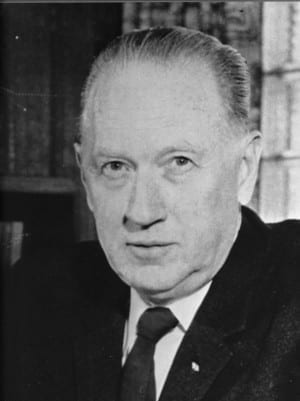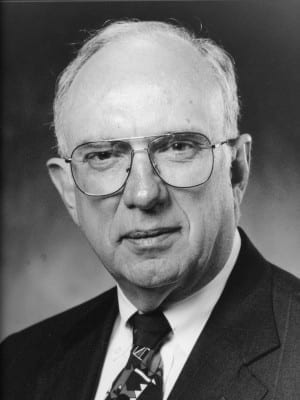The history of Des Moines University Medicine and Health Sciences reflects a continuing commitment to teach, to learn and to serve.
Founded in 1898 by Dr. Summerfield Saunders Still and his wife, Dr. Ella Still, the Dr. S.S. Still College of Osteopathy was located at 1422 West Locust Street, in downtown Des Moines. The College Infirmary, located across the street, provided an opportunity for students to work directly with patients during their medical training. Students' coursework included classes such as descriptive anatomy, theory of osteopathy and dissection. From its founding through the early 1920s, the college admitted large numbers of female students, sometimes comprising over one-third of the class, who attended classes and trained alongside their male classmates as equals. Over the decades, female enrollment waned but experienced a resurgence during the 1970s. Today, female students make up over 55% of the student body.

In 1905, the school changed its name to the Still College of Osteopathy and continued to grow and prosper during the first part of the 20th Century. In 1909, the college purchased the Iowa Sanitarium building and opened the Des Moines General Hospital. The Hospital was sold in 1916 but remained closely tied to the school until closing its doors in 2000. Outside of class, student life flourished, as professional fraternal organizations, sports teams and a college band kept students busy in their spare time. By 1927, the college had outgrown its building and moved to 722 Sixth Avenue, just a few blocks north of the city center.

The College was renamed the Des Moines Still College of Osteopathy and Surgery in 1945 to reflect an expanding curriculum. One year later, the College opened the Still College Osteopathic Hospital and College Clinic, which provided enhanced clinical training opportunities for students and increased health care options for the community. In 1967, the Hospital became the Harrison Rehabilitation and Treatment Hospital, the first center in the state of Iowa to treat the disease of alcoholism. The clinic closed in 1972, when the College moved to Grand Avenue.
The name changed again, in 1958, to the College of Osteopathic Medicine and Surgery. Beginning in 1963, the College opened a number of off-campus clinics in Des Moines and the surrounding area. In 1971, the Dietz Diagnostic Center, located on Des Moines' south side, began operation as a major outpatient facility.

In 1972, the college moved to a 22-acre site on Grand Avenue. Originally the campus of St. Joseph's Academy, a former Catholic girls' school, the Grand Avenue location provided faculty and students with the space and resources they needed to succeed. During the ensuing years, enrollment in the college more than doubled and new buildings added to and replaced those used by the Academy.
In 1980 the university established two new colleges, the College of Podiatric Medicine and Surgery and the College of Biological Sciences (later renamed the College of Health Sciences). These colleges, with the College of Osteopathic Medicine and Surgery, became the University of Osteopathic Medicine and the Health Sciences in 1981.
The College of Podiatric Medicine and Surgery was the first podiatry school to be affiliated with an academic health science center and is one of 11 podiatric medical schools in the nation.
In the College of Health Sciences, the charter class of the physician assistant program received the bachelor of science degree and the physician assistant certificate in 1983. The first graduates of the health care administration program received the master of science degree in 1986 and the first graduating class in the physical therapy program received the master of science in physical therapy degree in 1990.
Order your copy today.
The Des Moines University Clinic opened in 1986 — the 10-story facility offers primary care, medical specialties and ambulatory surgery. Adjacent to the clinic is the 1,500-seat Olsen Medical Education Center.
Renamed Des Moines University in 1999, DMU completed major changes to campus over the following decade. The former Science and Education Building, remodeled in 2002, was renamed Richard M. Ryan Hall in 2005, after the university's 13th president. The Student Education Center opened in 2005, replacing the former St. Joseph's Academy building and in 2006 the Munroe Building was remodeled to house two more classrooms. These changes reflected the needs of students and faculty, as incoming class sizes increased for the osteopathic, podiatric, physician assistant and physical therapy programs. Along with enrollment numbers, entering GPAs increased as well.
At the state-of-the-art campus, students used technology to achieve a top-notch education. The Iowa Simulation Center for Patient Safety and Clinical Skills, which opened in 2007, allows students to develop and improve their diagnostic and clinical skills and patient care abilities using cutting-edge technology.

In addition to enhancing its facilities, DMU has expanded its degree offerings. In 2007, the university launched master’s degree programs in anatomy and biomedical sciences. A Ph.D. program in biomedical sciences, which enrolled its first students in 2021, provides additional opportunities to students and has further contributed to the university’s diverse and growing research enterprise. DMU also has began the process of establishing a new doctor of occupational therapy degree program, which enrolled its first students in 2023.
Consistent with its mission of preparing outstanding health professionals while also responding to the nation’s health needs, in 2018 the university launched the Purple & Proud Campaign, a $50 million fundraising effort and the largest in DMU’s history. The campaign’s priorities included another bold DMU initiative – to build the medical and health sciences university of the future on 88 acres in West Des Moines, Iowa. The university moved to the new site in June 2023.
Des Moines University has a vibrant history that continues to inspire. And as the second oldest osteopathic medical college in the United States, DMU continues to prepare physicians and allied health care personnel for careers in the ever-changing field of medicine, while developing innovative programs to serve students and society.














